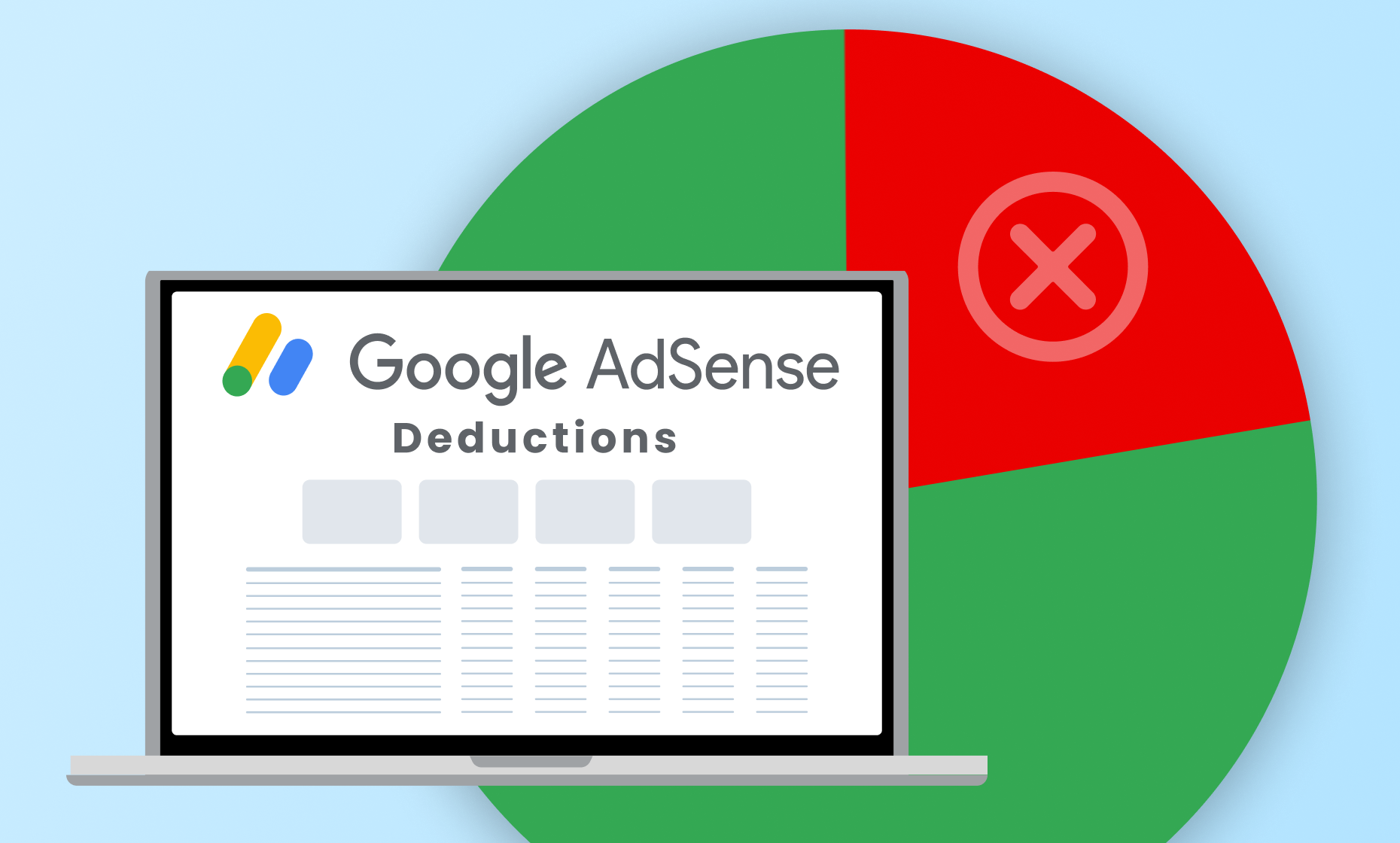AdSense Deductions: what are they and how publishers can avoid them

The topic of AdSense deductions is becoming more important, as the number of publishers facing the issue continues to rise. The main concern raised among publishers is that AdSense deductions might have a drastic effect on disrupting their earnings. In this blog post, we will find out what AdSense deductions are and how publishers can avoid being affected by them.
Summary
- What are AdSense deductions and what causes them?
- How does Google apply deductions?
- What can publishers do about AdSense deductions?
- How to prevent AdSense deductions?
What are AdSense deductions and what causes them?
AdSense deductions first appeared in the Google payment report in May 2015. The main reason for adding an extra line in the report was the need to reveal the difference between the expected profits and the final sum paid to a publisher. To check whether your account has ever been affected by AdSense deductions, go to your AdSense account to the section Payments > Transactions.
The main explanations for publishers facing the issue of AdSense deductions relate to invalid traffic and ad placement that doesn’t meet Google AdSense policy. Sometimes Google may also reduce publishers’ revenues if difficulties occur in receiving compensations from advertisers.
According to Google, invalid traffic is any activity (clicks or impressions) that is not generated by the actual interest of a user. The term of invalid traffic includes intentionally fraudulent traffic and accidental clicks. Examples of fraudulent traffic might be the use of artificial softwares, aimed to bring more clicks and traffic, and the application of messages encouraging clicks on the ads. Invalid traffic by accidental click recently has been noticed to be on the rise. One of the reasons for this is probably grounded in available technologies that better measure the user interactions with advertising.
AdSense deductions may be also a result of the click сonfirmation process, the procedure applied by Google when invalid traffic is detected on the site. When facing a Click confirmation penalty, the first thing that you will notice is a drastic drop in earnings without being a corresponding drop in traffic. To make sure this is the case, check the main metrics such as eCPM, CTR and Impressions. Impressions will remain consistent, while eCPM and CTR rates will have dropped significantly.
How does Google apply deductions?
To maintain a sustainable digital ecosystem, Google does not reveal any concrete information regarding when or how frequently invalid traffic could have been found on web pages. However, it does explain how the process of deduction is normally organized. At first, Google applies real-time filtering, the effect of which you can notice in your revenue report, when monitoring it on a regular basis, in the form of unpredicted variations. These variations happen because of automatic earning adjustments made by Google due to activities such as double clicks, crawlers, sabotage, etc.
The second step for invalid clicks adjustments is made during the finalization process and revealed in the final reports at the end of each month. The further deductions within 60 days after payment occur less frequently.
What can publishers do about AdSense deductions?
There is not much publishers can do to appeal deductions that have already been made. What they can do is to ensure total compliance with Google AdSense policies that will help to prevent AdSense deductions in the first place. Additionally, publishers can notify Google Team using the Invalid Clicks Contact Form, if they notice unusual levels of invalid activity on their site.
How to prevent AdSense deductions?
The best way to prevent any form of subtractions from your account is to follow the Google guidance on how to ensure correct ad placement and avoid invalid traffic on your site.
Below you will find a list of recommendations that will help you to prevent AdSense deductions.
- Focus on ensuring correct ad placement: do not place ads too close to clickable elements of the site such as a menu, navigation, or download links. Add margins if needed.
- Make sure your ads are distinguishable from the main content: label all your ad units as “Advertisements” or “Sponsored links”.
- Control ad placement from different devices: ensure correct ad placement both on mobile and desktop.
- Do not mislead users: it’s prohibited to use any misleading tricks like offering compensation, using confusing headers, or attracting attention to ads in an unnatural way.
- Keep track of your traffic: avoid traffic from paid sources and run traffic quality analysis on a regular basis.
To have a better understanding of Ad placement policies, visit Google AdSense Policy Centre.
We understand that compliance with all policies and regulations is never easy. Here at Clickio we develop our products in accordance with the rules from the beginning, to secure publishers from any violations that can significantly affect the results of monetization revenues. One way to prevent AdSense deductions is Prism – a technology, developed by Clickio, that transforms any content site into a progressive web app. Besides increasing speed, user engagement, and revenues, the technology also complies with all regulations providing a better experience to users.
Please contact us if you would like to find out more.
